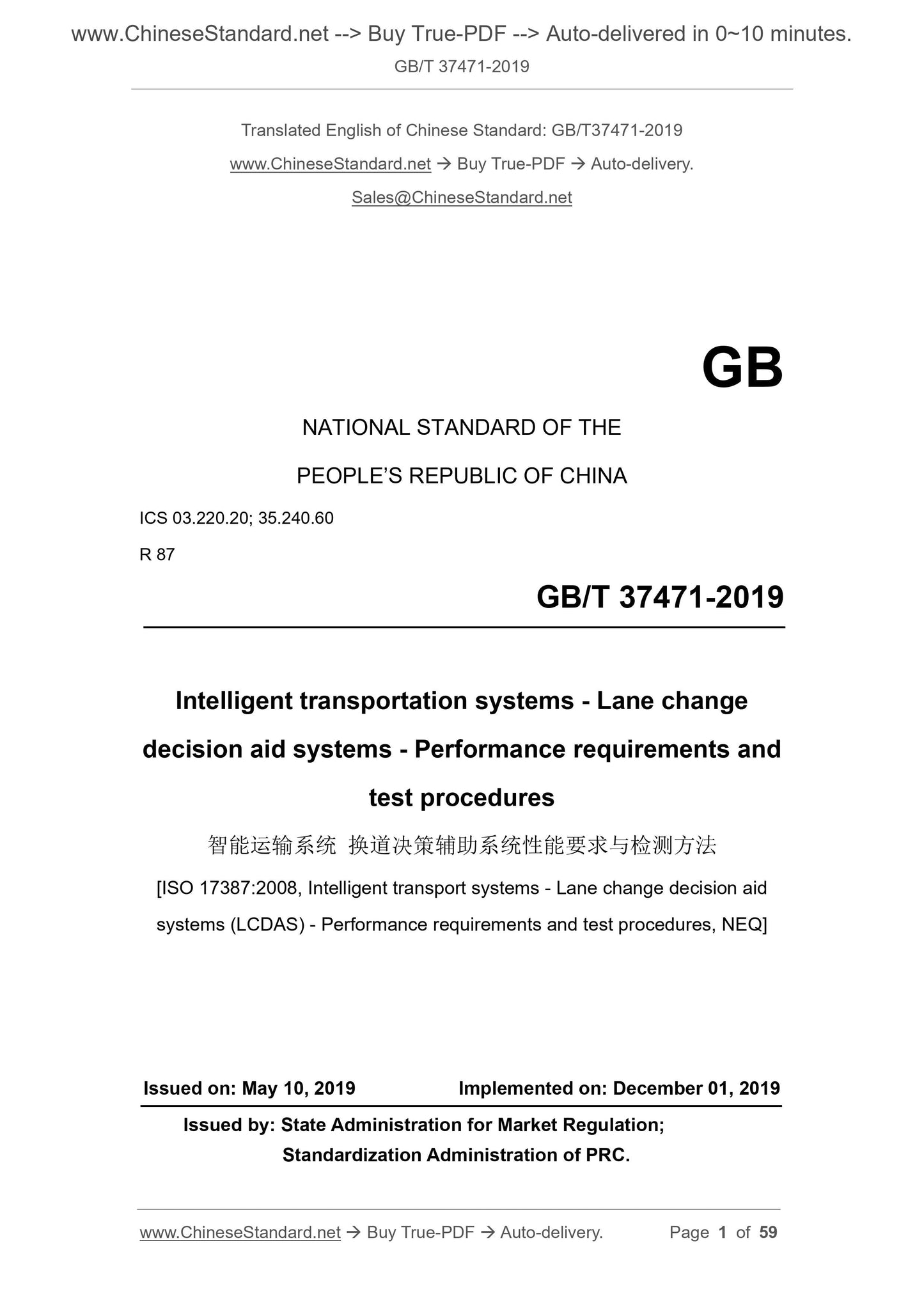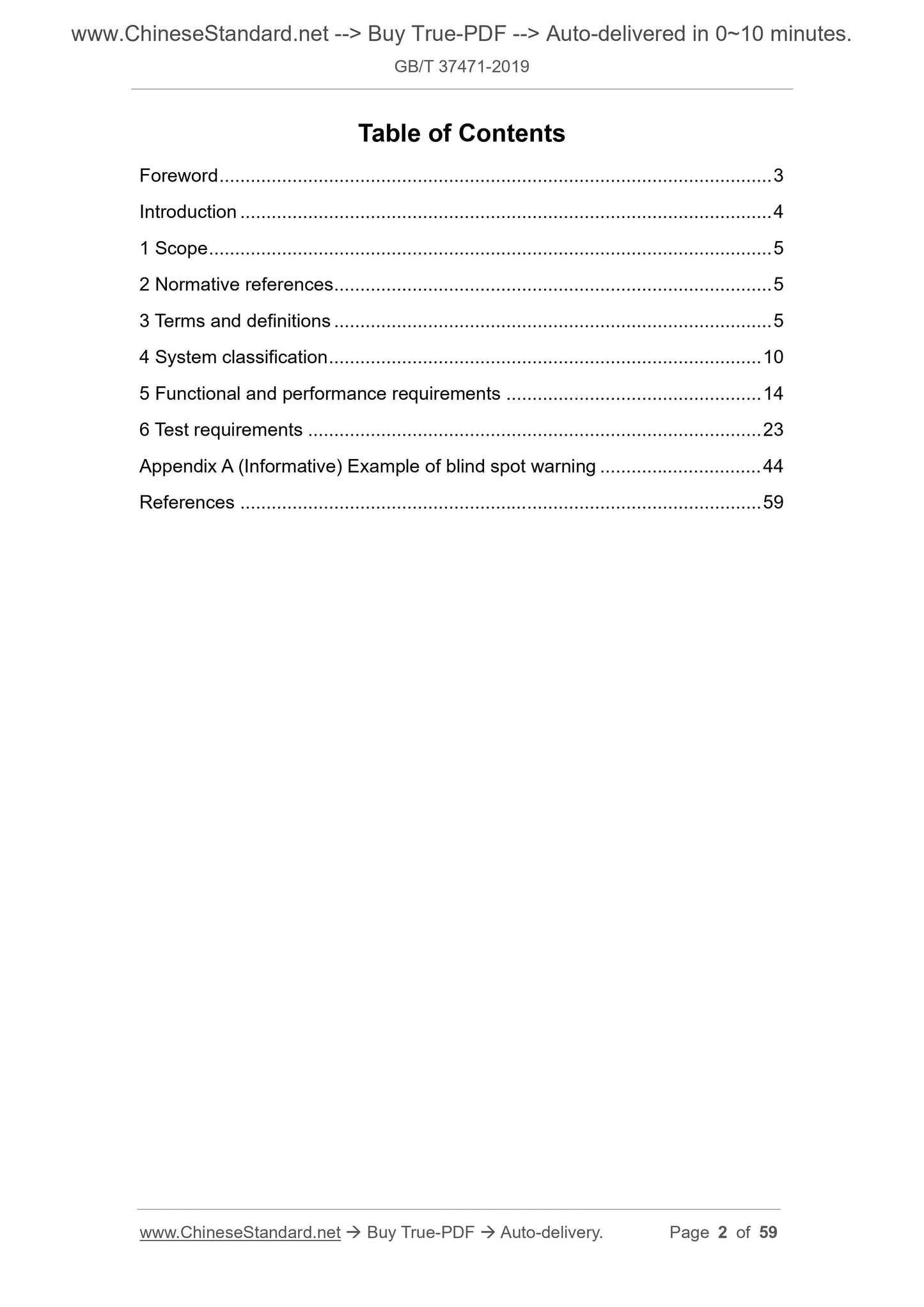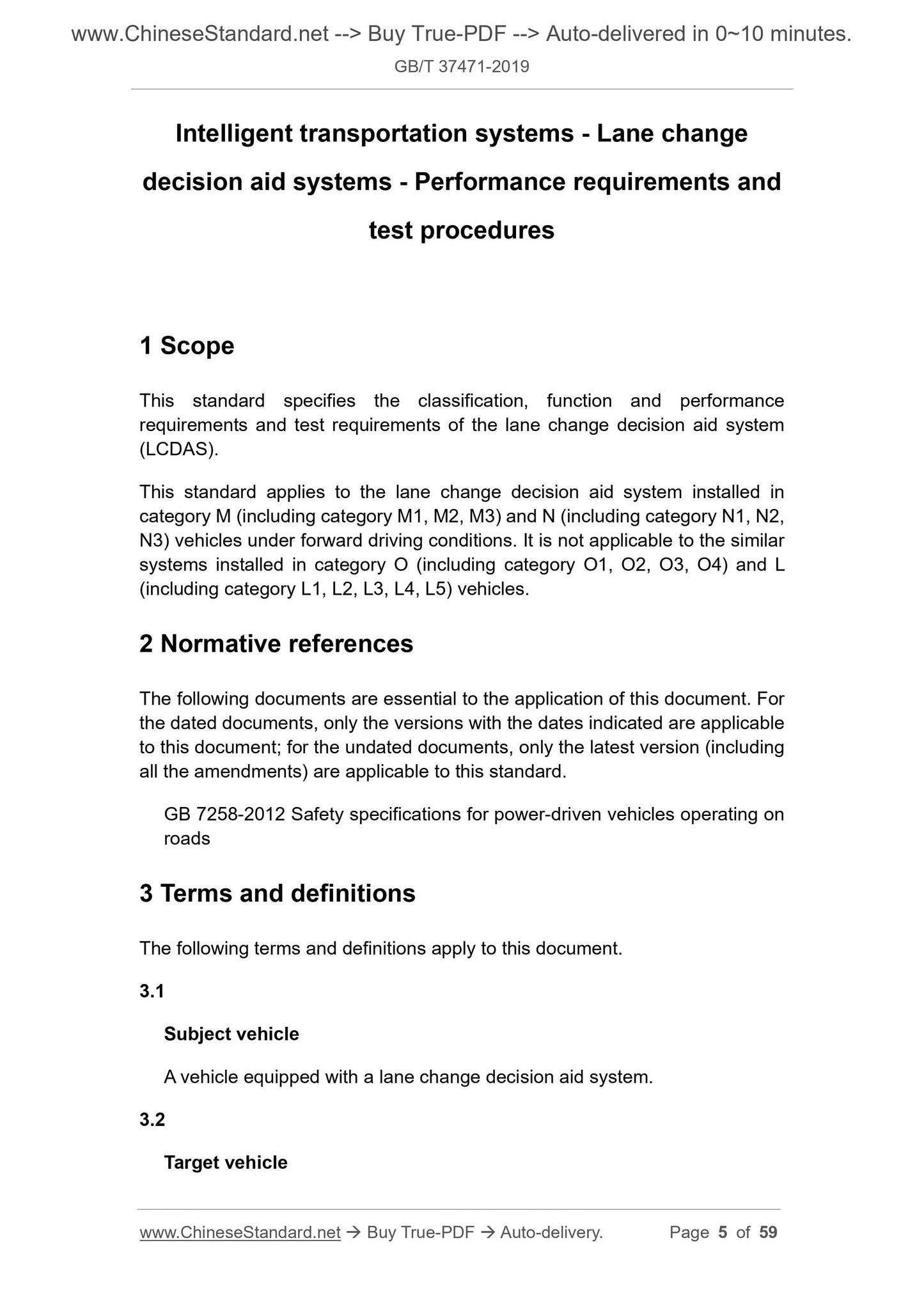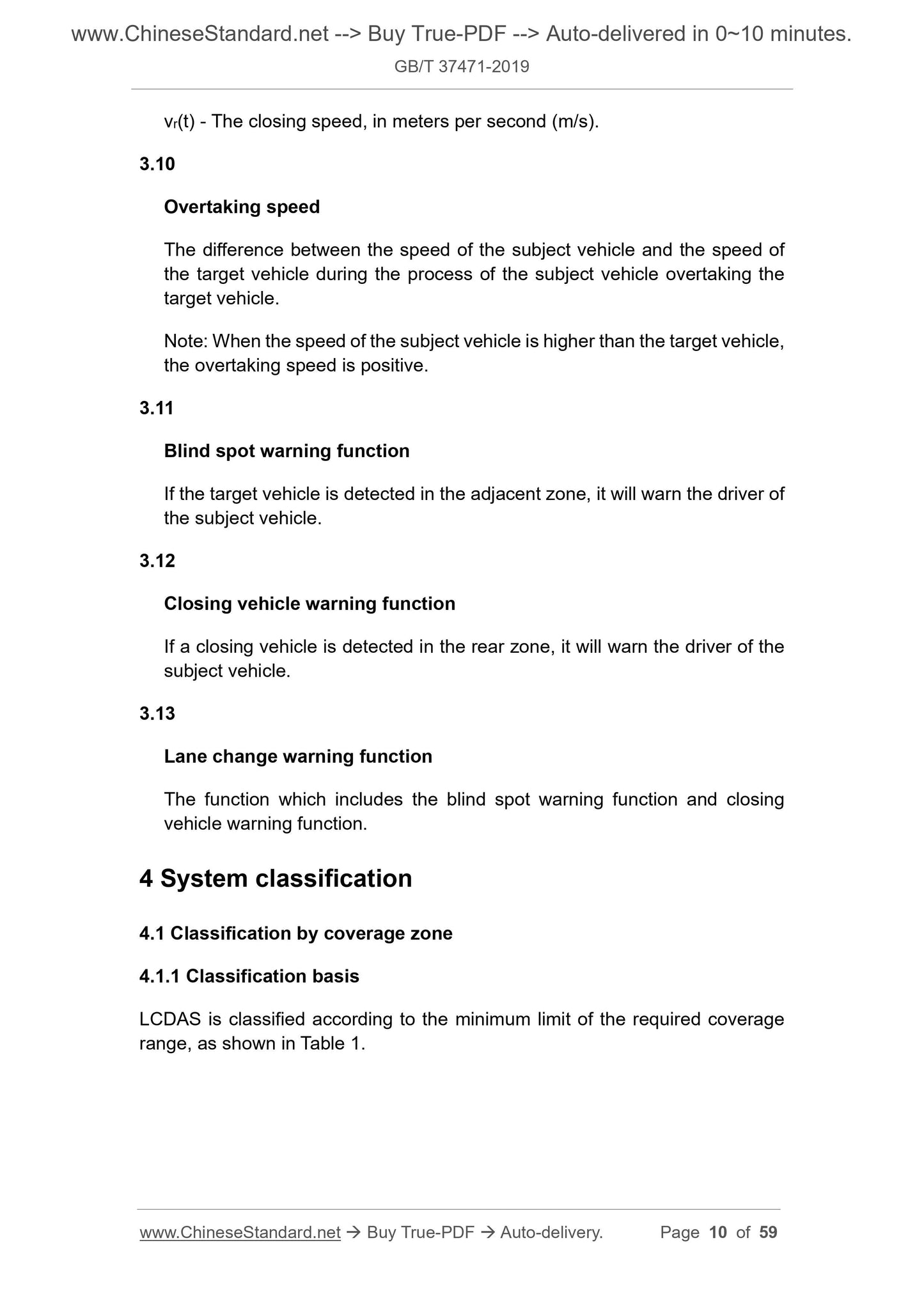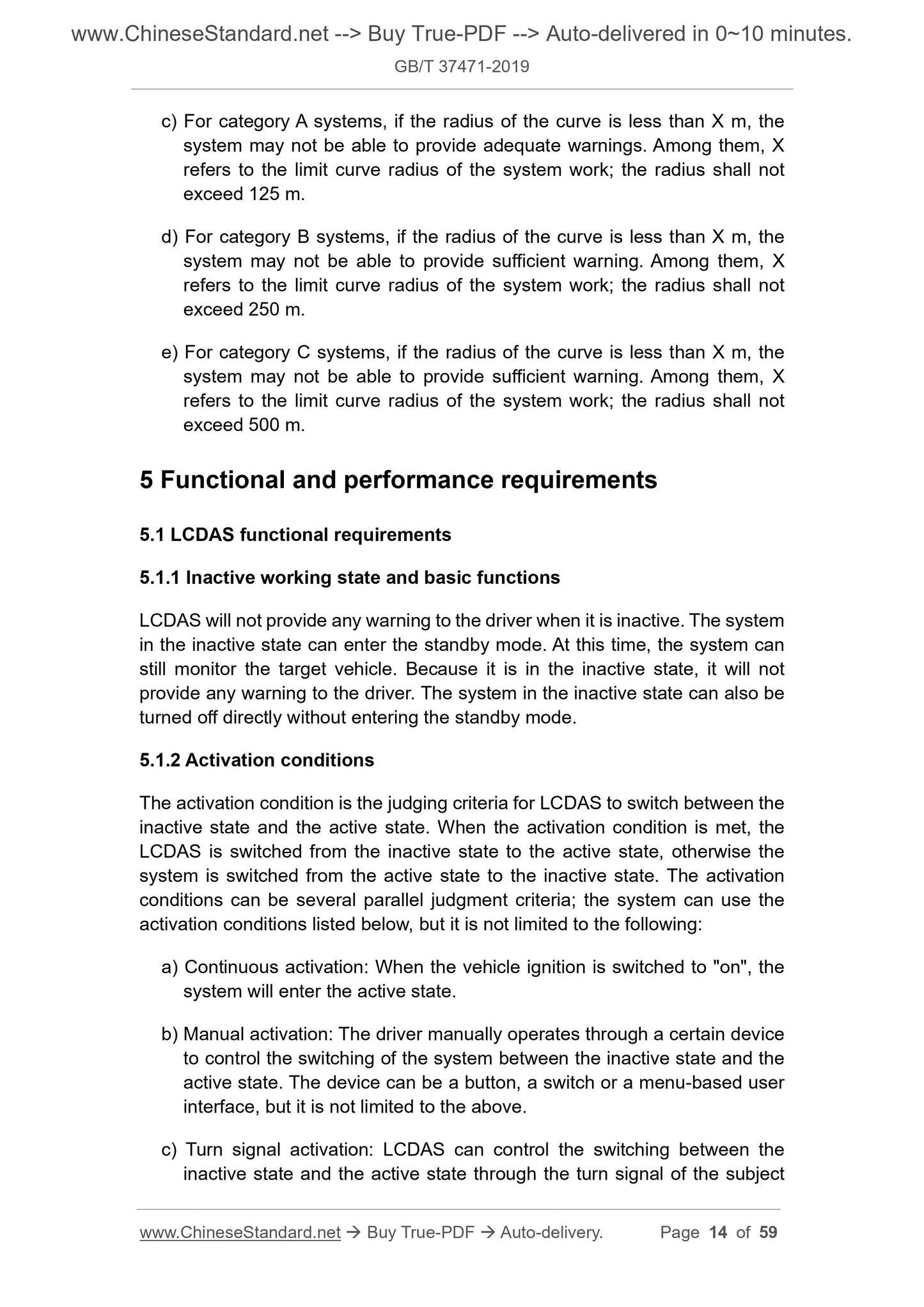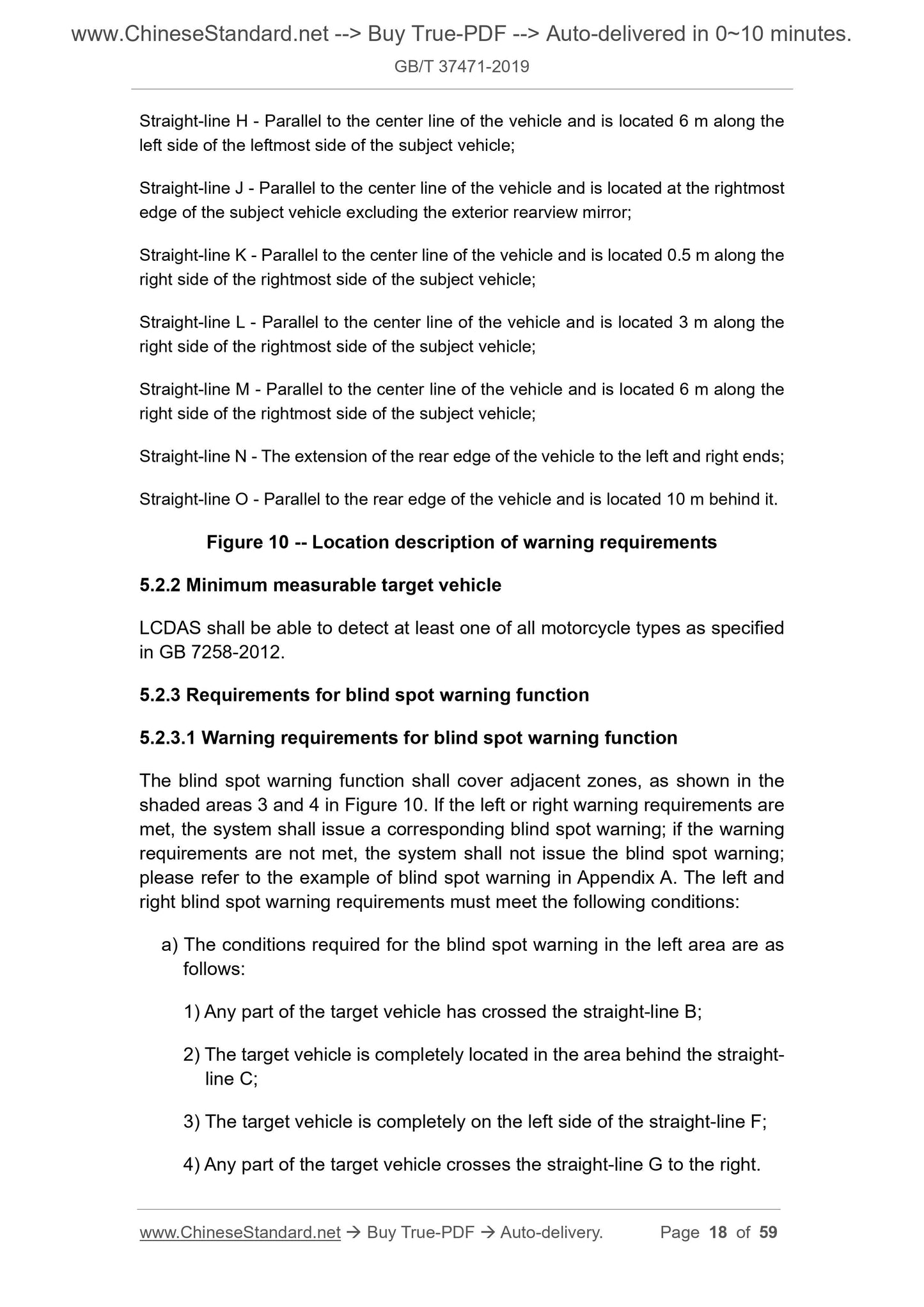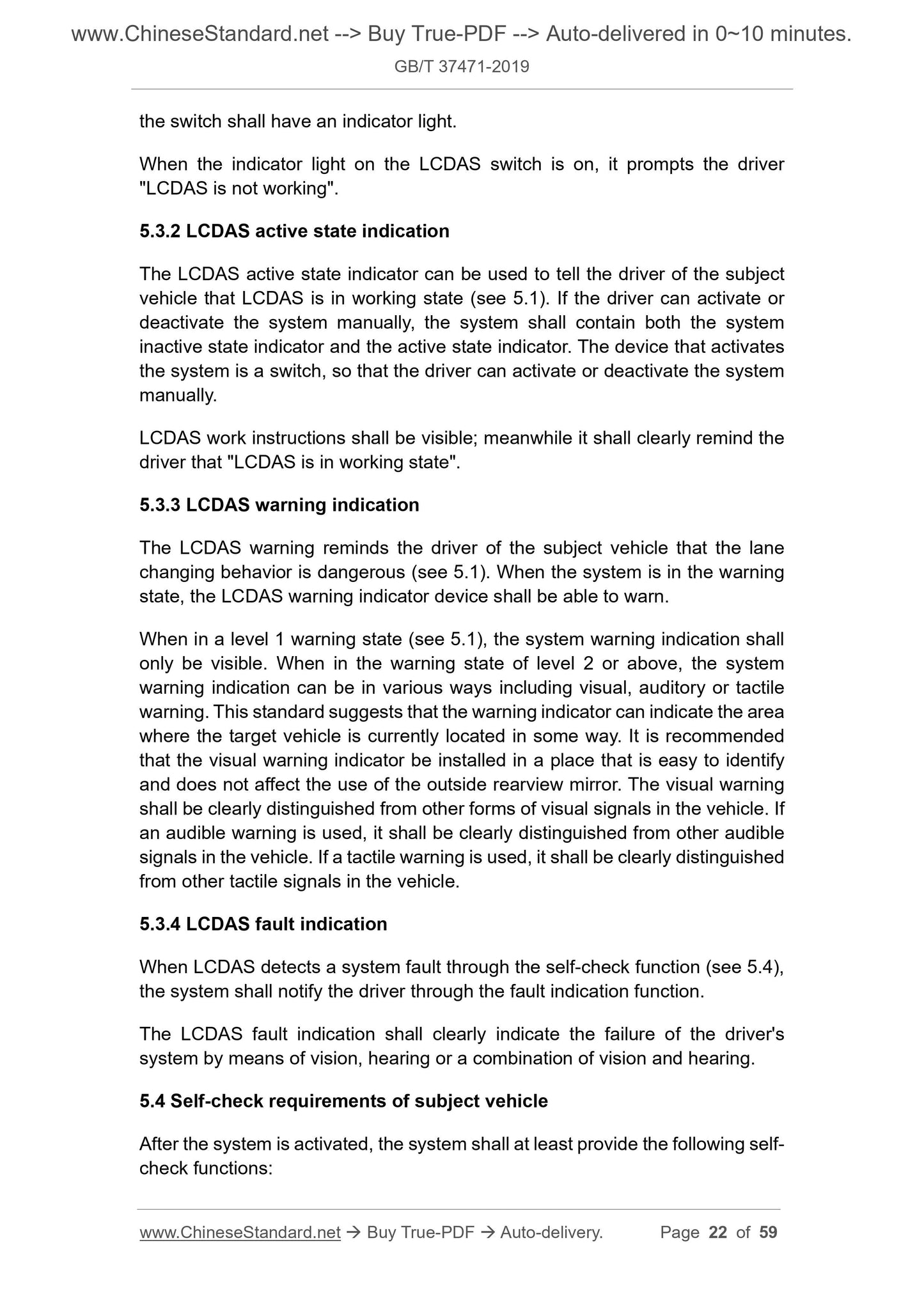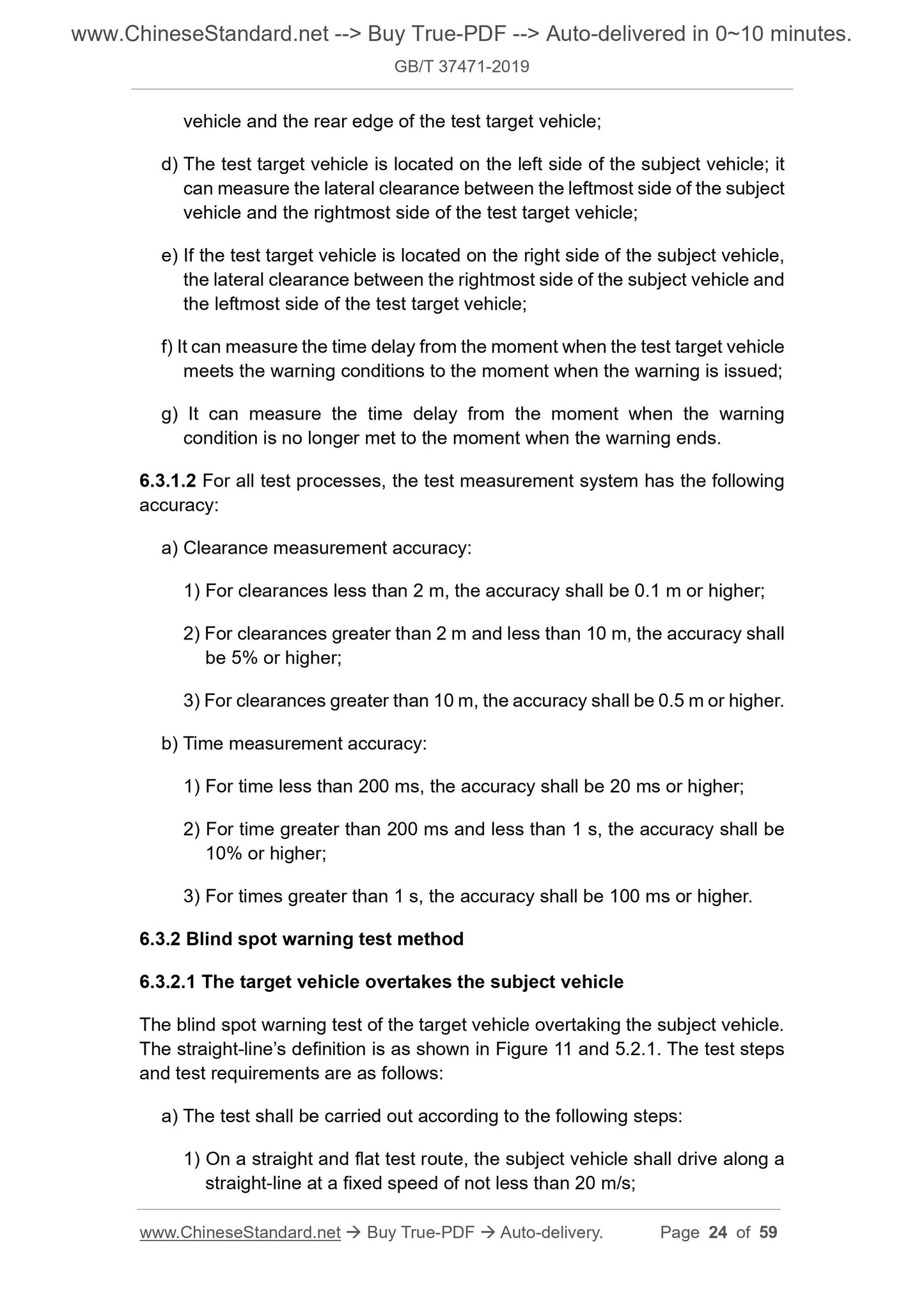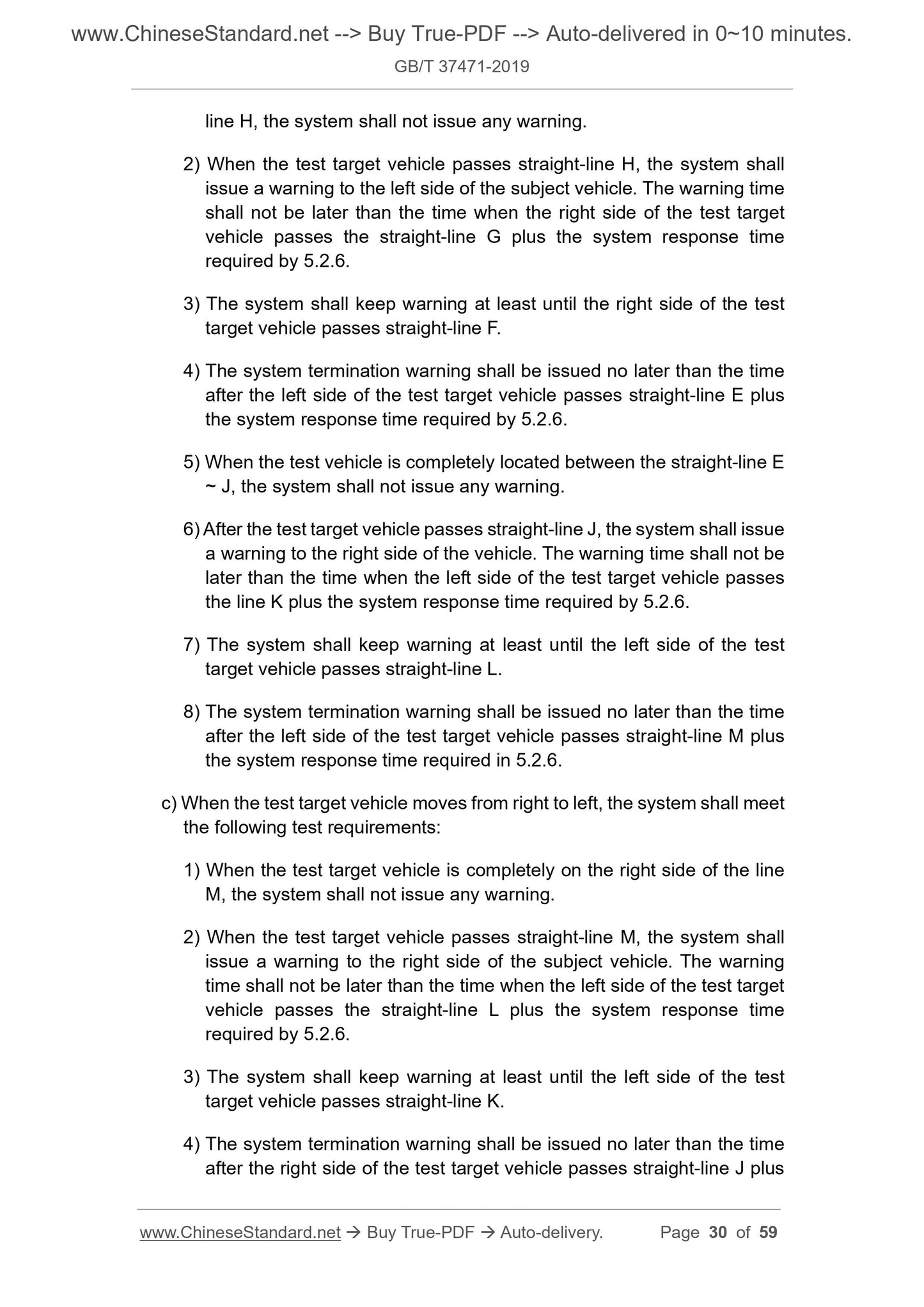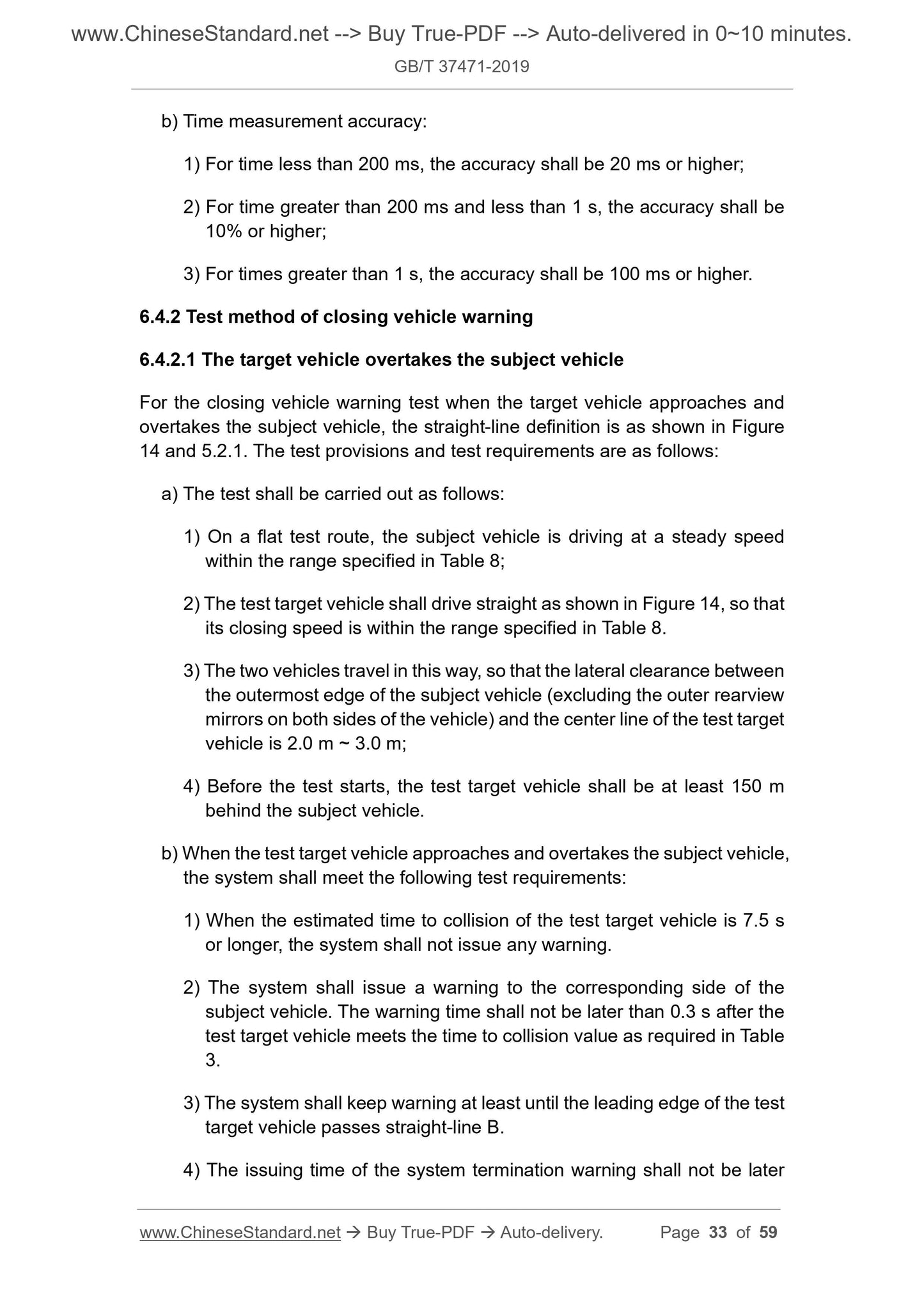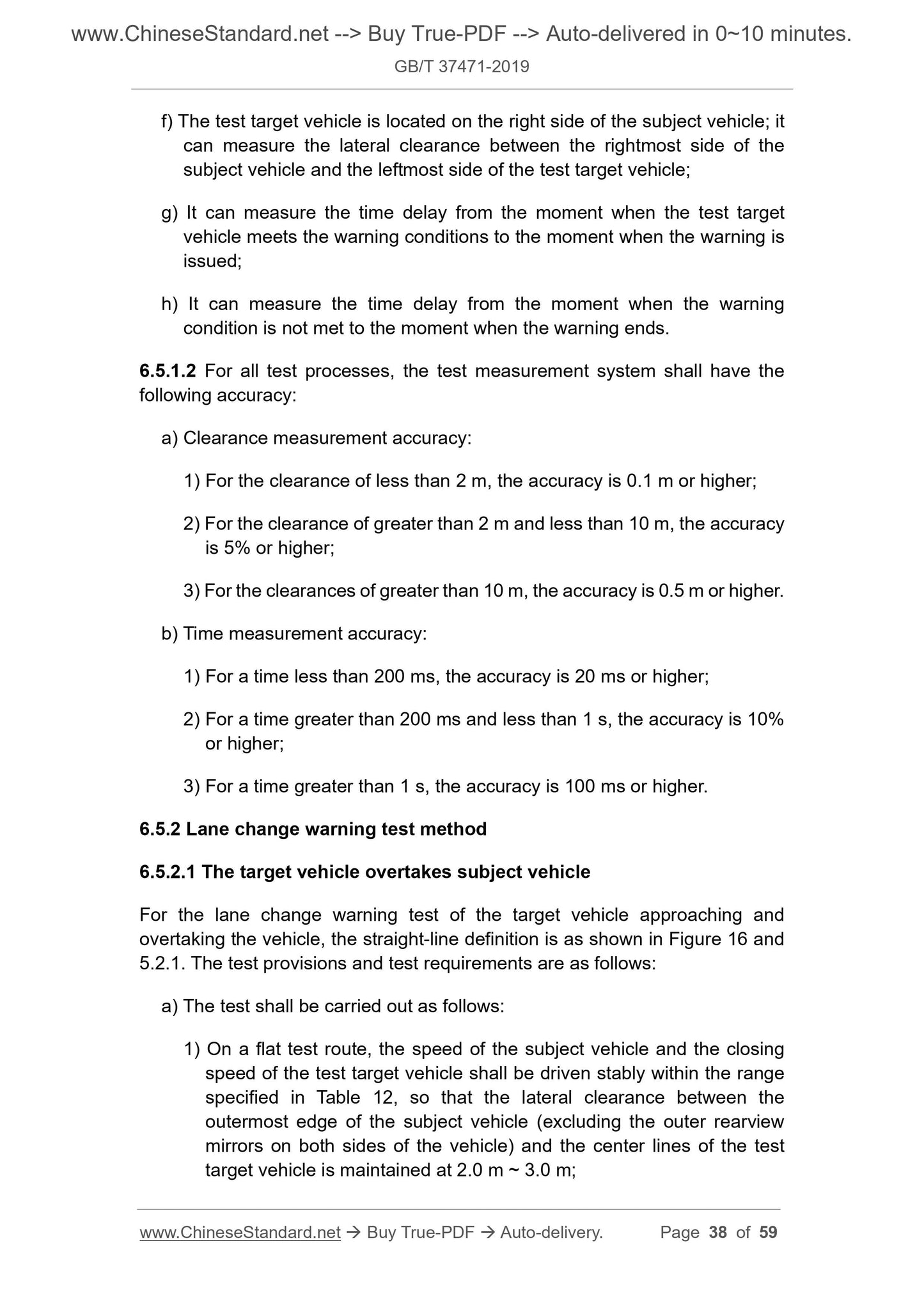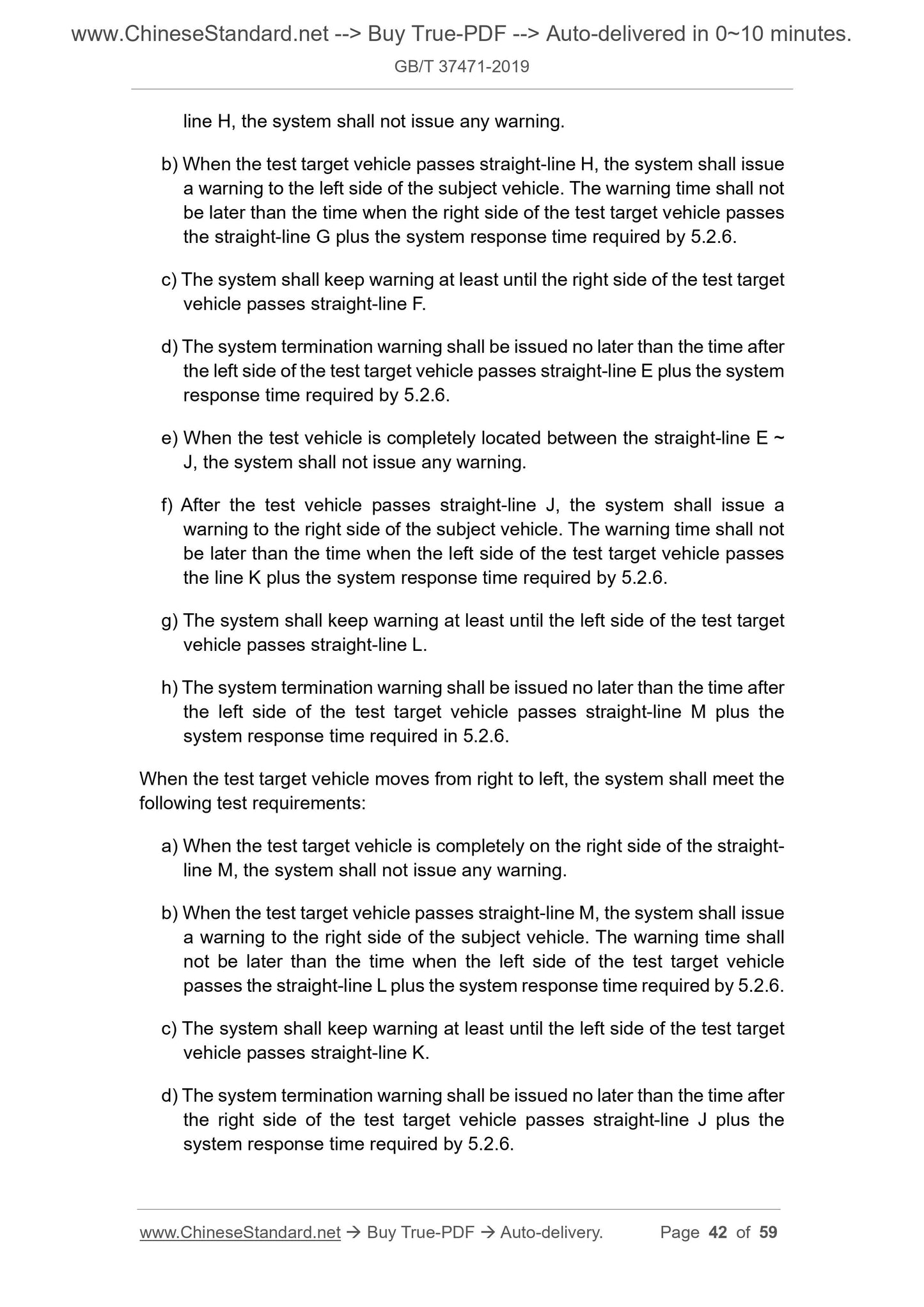1
/
of
12
www.ChineseStandard.us -- Field Test Asia Pte. Ltd.
GB/T 37471-2019 English PDF (GB/T37471-2019)
GB/T 37471-2019 English PDF (GB/T37471-2019)
Regular price
$610.00
Regular price
Sale price
$610.00
Unit price
/
per
Shipping calculated at checkout.
Couldn't load pickup availability
GB/T 37471-2019: Intelligent transportation systems - Lane change decision aid systems - Performance requirements and test procedures
Delivery: 9 seconds. Download (and Email) true-PDF + Invoice.Get Quotation: Click GB/T 37471-2019 (Self-service in 1-minute)
Newer / historical versions: GB/T 37471-2019
Preview True-PDF
Scope
This standard specifies the classification, function and performancerequirements and test requirements of the lane change decision aid system
(LCDAS).
This standard applies to the lane change decision aid system installed in
category M (including category M1, M2, M3) and N (including category N1, N2,
N3) vehicles under forward driving conditions. It is not applicable to the similar
systems installed in category O (including category O1, O2, O3, O4) and L
(including category L1, L2, L3, L4, L5) vehicles.
Basic Data
| Standard ID | GB/T 37471-2019 (GB/T37471-2019) |
| Description (Translated English) | Intelligent transportation systems - Lane change decision aid systems - Performance requirements and test procedures |
| Sector / Industry | National Standard (Recommended) |
| Classification of Chinese Standard | R87 |
| Classification of International Standard | 03.220.20; 35.240.60 |
| Word Count Estimation | 46,449 |
| Date of Issue | 2019-05-10 |
| Date of Implementation | 2019-12-01 |
| Issuing agency(ies) | State Administration for Market Regulation, China National Standardization Administration |
Share
